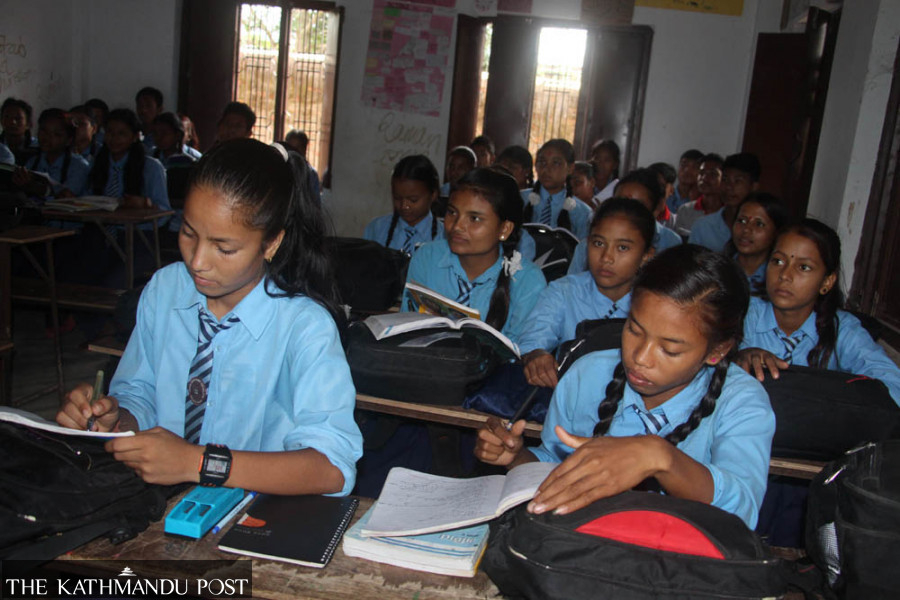National
4.5 million girls at risk of not finishing school due to pandemic
A UN report says with children remaining out of school, the risk of child labour, gender-based violence, early and forced marriage, and early pregnancy may increase.
Binod Ghimire
The closure of schools due to Covid-19 lockdowns has put an estimated 4.5 million girls at risk of not completing their education, according to a report by UNESCO Institute of Statistics.
Releasing its report on the occasion of International Day of the Girl Child on Monday, the institute said that the continuous closure of schools since March 2020 has also increased the risk that thousands of girls will never return to their classrooms. Starting 2011, the United States has been marking October 11 as the International Day of the Girl Child, to recognise girls’ rights and the unique challenges girls face around the world.
“Such crises lead to long-lasting impacts on gender equality and education with irrevocable consequences on the most marginalised girls,” reads the report. “The risk of child labour, gender-based violence, early and forced marriage, and early and unintended adolescent pregnancy may increase, leading to many girls never returning to school.”
Over the years, girls’ enrolment in schools has increased significantly with gender parity index of the boys and girls reaching 1:1 which means the total share of girls in classrooms is 50 percent.
Also, various reports like the one by the institute show the pandemic could take away the hard-earned achievement in increasing the access to education.
“Despite faring poorer in quality, girls’ access to education had increased significantly in the last two decades,” Binay Kusiyait, a professor at Tribhuvan University, told the Post. “Though it is hard to say to what extent, the pandemic is surely taking away the achievement.”
He said the retention of children in school had been a challenge, which the pandemic has further increased. The government’s economic survey report for the fiscal year 2020-21 shows over two-thirds of the students enrolled in grade one drop out of the school system by the time they reach grade 12, which is the final year of school education. The report shows that the retention rate up to grade 12 in the current fiscal year was 29.2 percent.
Although daily new cases have come down to around 1,000, the coronavirus threat has not gone amid a possible third wave looming. The federal government has allowed schools to resume in-person teaching learning with consent from the local government. Not many local governments have allowed full-fledged resumption of schools. As the government plans to start vaccinating those under 18 years of age from the beginning of next year, school operators hope physical classes in full-fledged manner could resume in the next three months.
Kusiyait said ineffective virtual learning and the government’s reluctance in strengthening alternative learning platforms is largely responsible for the negative consequences. A report by UNICEF Nepal showed last month that only 27 percent of students had access to online study. The report, based on a survey among 6,643 children and guardians across the seven provinces, also revealed the reluctance of the teachers to connect to their students.
The study showed that half of the children across the country haven’t had any in-person or virtual contact with their teachers since their schools were closed in March 2020. As many as 69 percent of the respondents had complained that schools had not undertaken any efforts to support children to make up for the lost teaching-learning activities during the pandemic.




 14.12°C Kathmandu
14.12°C Kathmandu















